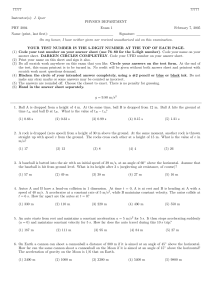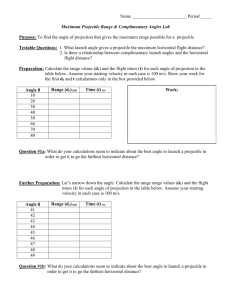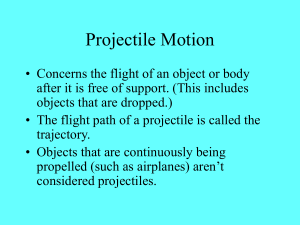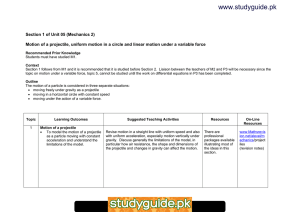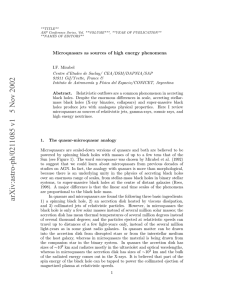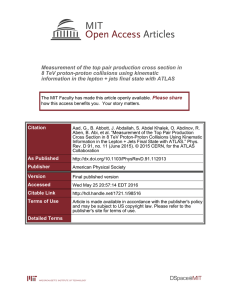Modelling 2017 Maths AS/A Levels
advertisement
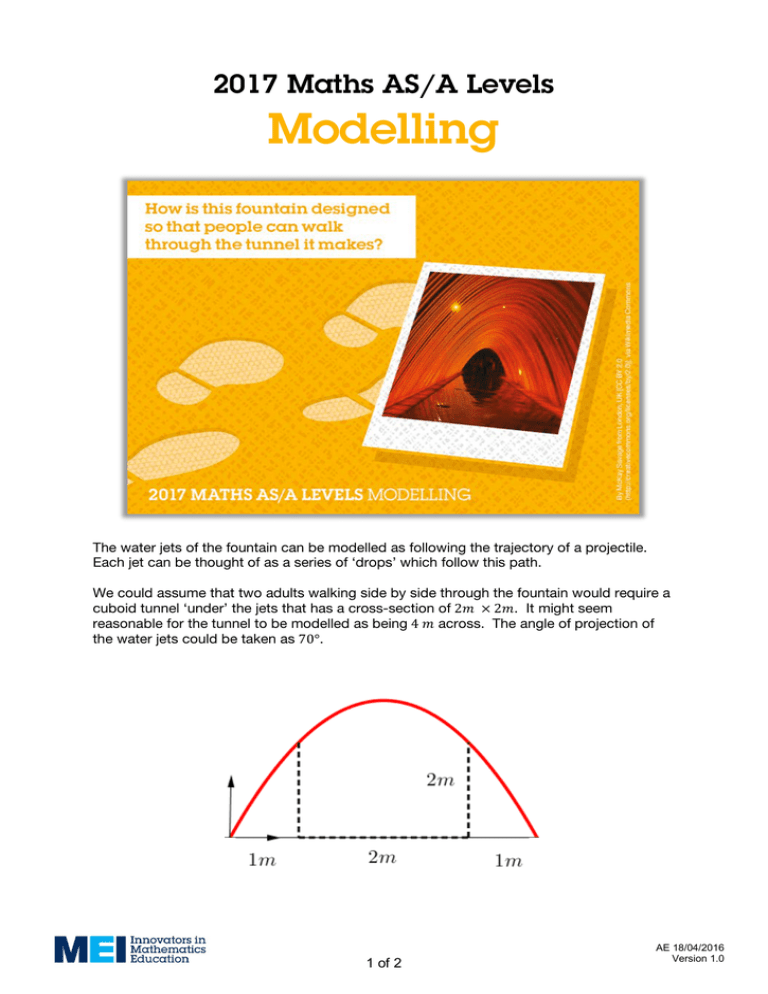
2017 Maths AS/A Levels Modelling The water jets of the fountain can be modelled as following the trajectory of a projectile. Each jet can be thought of as a series of ‘drops’ which follow this path. We could assume that two adults walking side by side through the fountain would require a cuboid tunnel ‘under’ the jets that has a cross-section of 2𝑚𝑚 × 2𝑚𝑚. It might seem reasonable for the tunnel to be modelled as being 4 𝑚𝑚 across. The angle of projection of the water jets could be taken as 70°. 1 of 2 AE 18/04/2016 Version 1.0 Using the constant acceleration equations of motion in the vertical and horizontal directions with an angle of projection of 70° and horizontal range of 4 𝑚𝑚 we find that 𝑣𝑣𝑣𝑣 = and 𝑡𝑡 = Hence, 𝑣𝑣 2 = 4 cos 70° 2𝑣𝑣 sin 70° 𝑔𝑔 4𝑔𝑔 ⟹ 𝑣𝑣 = 7.81 𝑚𝑚/𝑠𝑠 sin 140° Since the trajectory of a projectile, given by the equation 𝑦𝑦 = 𝑥𝑥 tan 𝜃𝜃 − 𝑔𝑔𝑥𝑥 2 sec 2 𝜃𝜃 2𝑣𝑣 2 is dependent only on the angle of projection, 𝜃𝜃, and the initial velocity, 𝑣𝑣, we now have the two values which could describe the path of the above water jets. In order to check whether our initial assumptions were reasonable we can use the constant acceleration equations again. In applying these we find that an individual ‘drop’ of water is at a height of 2 𝑚𝑚 when after 0.3 𝑠𝑠𝑠𝑠𝑠𝑠 and 1.14 𝑠𝑠𝑠𝑠𝑠𝑠. During this time interval the ‘drop’ travels 2.11 𝑚𝑚 in the horizontal direction. Some assumptions for the model are stated above. What others have been made? (e.g. acceleration due to gravity being 9.8 𝑚𝑚/𝑠𝑠 2 , air resistance is negligible, ground is horizontal, no wind, no horizontal acceleration, water jet treated as a series of water ‘drops’, etc) What effect does changing the angle to projection to 60° have? Or 80°? If you were designing a tunnel for children what changes could be made to the model? 2 of 2 AE 18/04/2016 Version 1.0


